As of November 2017, WaterRower has replaced the GX with the A1 rower. The company no longer manufactures the GX. All excess inventory will be sold with full warranty & replacement parts available.
You are probably not going to find a new GX at this point. If you are looking to buy a new rowing machine, you should look at the A1. If you are considering buying a second-hand GX, read the review below.
Read more: Our WaterRower A1 Rowing Machine Review
Entry level version of the WaterRower. Quieter than expected with a smooth rowing stroke very close to actually rowing on the water. Great design. Stores in a surprisingly small space.
- Smooth water-like rowing feeling
- Hand-made in USA 🇺🇸
- Great warranty
- The A1 monitor is missing a lot of advanced features
Today, we’re reviewing the WaterRower GX. Like the A1, there’s a Home and Studio version. The GX and A1 monitors are essentially the same.
Also like the A1 line, it uses ash wood and has an aluminum monorail.
So, the GX and A1 rowers are essentially identical. I’ve used the near-identical A1 Home. So, while I haven’t tried the GX personally, I pretty much know how it performs and compares to other WaterRower models.
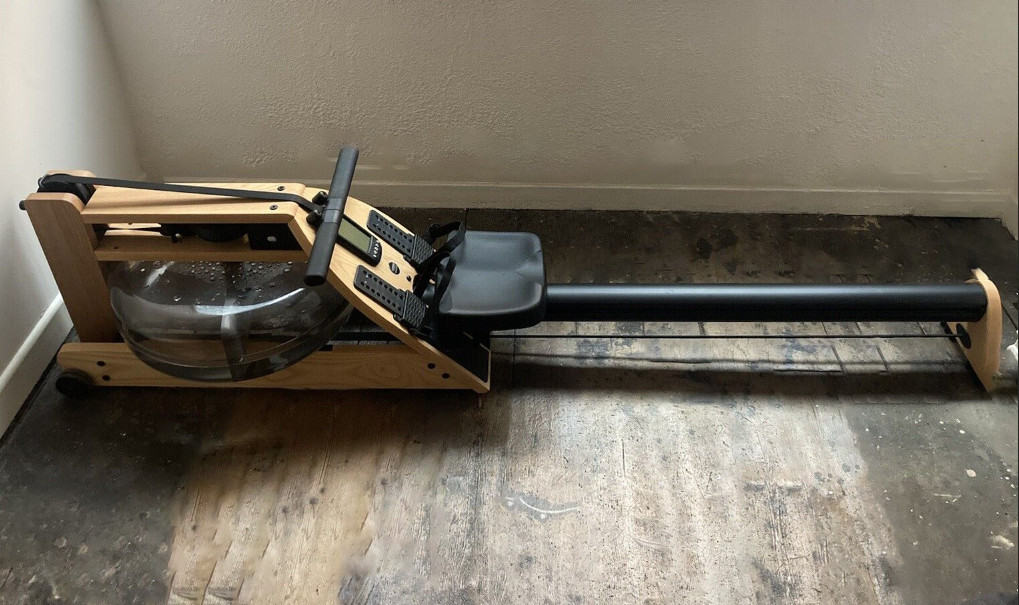
In short, the aluminum and wood combo of the GX rower provides a high-quality look and feel. The design is space-saving which is nice. The main downside is the simple monitor. The GX monitor is about the same as the A1, so it’s a far cry from the advanced S4 performance monitor.
The monitor is fine for most. I recommend choosing a model with an S4 in the following situations:
- the space-saving design isn’t of interest
- you can find an S4 model for the same price (quite common)
- you care to get into the hobby of indoor rowing where advanced metrics are more important
- you’d like to race online with others
- you’d appreciate the extra workout variation
As of November 2017, the GX is no longer available from WaterRower. The GX was an A1 with a nearly-identical monitor and the “WaterRower GX” branding on the tank assembly.
The GX was part of a joint venture between WaterRower and a third party that no longer exists. The A1 that is available now is the new version of the WaterRower A1 offered prior to the GX.
The GX Rower is made in the U.S. and handcrafted using sustainably sourced premium Ash hardwood from the Appalachian Mountains.
Each rower is left unstained and finished in Danish oil to keep the natural luster and warmth of the hardwood.
Featuring an aluminum, monorail design and the GX patented quick start monitor, this WaterRower is designed perfectly for at-home use.
Table of Contents
(click a title to jump ahead!)
1. Resistance Type
2. Monitor/Control Panel
3. Build Quality
4. Comfort
5. Storage
6. Capacity
7. Dimensions
8. Assembly
9. Pros and Cons
10. Consumer Reviews
11. Warranty
12. Price
Resistance Type
For those new to the subject, the WaterRower GX Home Rowing Machine is a water-based resistance rowing machine. This means the rower uses paddles spinning in a tank (also known as a “water flywheel”) to create the resistance.
There are 4 different resistance types: Water, Air, Magnetic, and Hydraulic Piston.
You can learn more about how each of these resistance types works by visiting my post here.
Water-resistance operates much like air-resistance rowers. The amount of resistance the user will experience is caused by the intensity at which they row.
To feel a stronger resistance, the rower must row faster, and slowing the pace provides a weaker resistance.
I.e., it’s not just that rowing faster provides a greater cardio workout – it actually makes the stroke feel heavier. The same goes for air resistance. This has to do with fluid dynamics.
For water resistance, the increase in speed leads to an increase in resistance consistent with what’s called, the “Rule of Cubes”. Meaning that a doubling in speed requires an 8-fold increase in power!
The main differences between water resistance vs. air resistance are:
- Water resistance makes a lot less noise compared to the air resistance flywheel
- Water resistance rowers provide an overall smoother rowing motion
Read more: Differences Between Water and Air Rowers
More Resistance Benefits
WaterRower has taken the “water flywheel” design a step further via their uniquely formed paddle designed to “cup the moving water” and provide a more even, smooth row.
This smooth, fluid row reduces the jarring and jerkiness that can cause injury. It also eliminates any mechanical feeling the rower may have.
Further, it provides a more even and complete workout across the entire body, leading to more calories burned.
A water-resistance design is perfect for beginners and highly-experienced rowers because it technically has an infinite amount of resistance levels.
A beginner can start off slowly and easily, and advance, at their own pace, up to the higher resistance levels.
Also, the resistance of the WaterRower GX Rower can be further modified by adding or subtracting water from the tank. This controls drag in the same way paddle depth does when rowing on water.
For example, to start off easy you can fill the tank halfway with water and work your way up to a higher intensity. Once you are comfortable at this level, you can then increase the amount of water in the tank and increase your resistance level.
Like other water-resistance rowers, the WaterRower GX is much quieter compared with top-end air rowers like the Concept2 Model D.
The WaterRower GX can be used while watching TV at a normal volume and most users say they actually enjoy the soothing sound of the whooshing water.
Check out the video below to see and hear a WaterRower in action.
Monitor/Control Panel
The WaterRower GX comes with the patented quick-start GX monitor. The monitor is a simplified version of the S4 monitor, which is what WaterRower uses on their higher-end models.
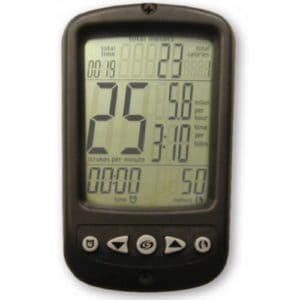
Typically, the monitor is one of the first components that are downgraded when designing a more affordable rowing machine.
Overall, the monitor provides everything a rower needs to have a fantastic workout and only lacks in some of the more advanced features of the S4.
The GX monitor is designed to fit the Indo-Row group rowing class, which is nice because it is 1 of the 2 free DVDs that come with the rower (more on these below).
The monitor has quick-start technology, which allows a user to begin a workout at the touch of a button.
What the GX Monitor Provides (3 Windows):
| “Total” Window | Total time Distance (total meters) Total calories burnt |
| “Current” Window | Stroke rate Speed (mile per hour) /500m (split timer per 500m) |
| “Race/Pace” Window | Setting of time or distance for race Quick restart of race |
What the GX Monitor Lacks:
- No heart rate monitor
- Can not connect to a PC
- No advanced functions
As you can see the monitor provides everything needed to get a great rowing workout.
Included DVD Set
Ok, now back to those DVDs. The WaterRower GX may not have the most advanced monitor but they try to make up for it by providing the Indo-Row and Shockwave workout DVDs.
The DVDs provide complete training information on technique, warm-ups, workouts, and games that are specifically designed to work with the GX monitor.
Note: Other reviews on the internet say you can upgrade the GX monitor to an S4 for $150 and receive a $75 rebate. This is not true. A lot of review sites do not do the actual research and just copy from other sites!
I spoke with a WaterRower representative about upgrades and they informed me that the only upgrade option is for an A1 monitor to an S4. They do not provide a GX to S4 upgrade kit or rebate, but a user can purchase and install the S4 monitor separately for $250.
If you think you want the upgraded S4 monitor, then it makes more sense to buy the WaterRower Natural or WaterRower Club (see full reviews below). You will be getting a better rowing machine for less than the cost of the upgrade.
Build Quality
The WaterRower GX is made in the USA using sustainably sourced hardwood. This rower is solid as a rock and the frame is built to last a lifetime.
Due to it being made of wood, WaterRower had to make sure the rower fit together seamlessly and that it was strong enough to avoid any creaking or vibration.
Luckily, they pulled it off and produced a rower that actually absorbs sound and vibrations, which makes it even quieter and smoother!
It incorporates an aluminum monorail design that some rowers prefer because it accumulates less dust and requires less maintenance due to the concave design.
The polycarbonate water tank is virtually indestructible, so no need to worry about having a tank full of water spilling all over your living room floor.
Comfort
The WaterRower GX Home Rowing Machine comes with the same “maximum” seat comfortability as the higher priced ‘Original’ models but was downgraded to a “medium” level seat/slide smoothness.
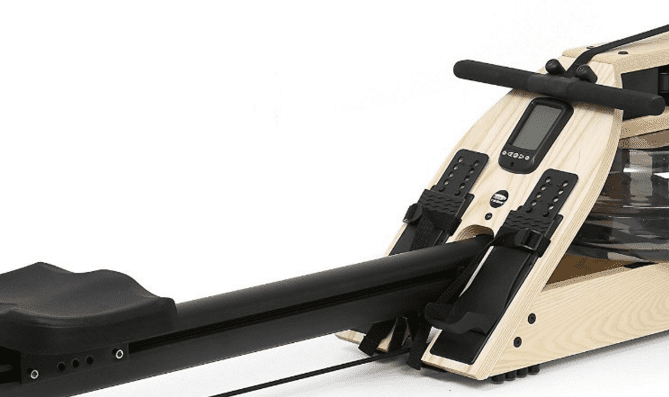
I believe WaterRower makes this distinction to differentiate between the WaterRower GX monorail and higher-end dual-rail designs.
However, there were no complaints about any discomfort during the rowing stroke.
The GX comes equipped with a comfortable 17″ handle that quietly pulls the belt operating the water flywheel. As mentioned before, the flywheel is surprisingly quiet and vibration free due to the strong build quality.
One difference on the GX Home Rower is the space separation between the users’ feet. The original models have the feet separated approximately 5.5″ (14cm) apart, while the WaterRower GX has them separated at 8.0″ (20.5cm) apart.
This is so that the rowing experience resembles that of a boat (shell) where a rower’s feet are 5.5″ apart.
However, for the average “at home” rower (females especially) this distance was uncomfortable.
In response to feedback, WaterRower changed this distance for the GX Home model to a more comfortable 8.0″ apart. This also allowed for a better “monorail” design to go in between the footrests.
Storage
Like other monorail WaterRowers, the GX is meant to be space-saving.
Storing the WaterRower GX is extremely simple. The only way to store it is by standing it upright.
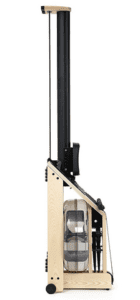
Luckily, it is very easy and even though it may look heavy it can be done using one hand (although I recommend 2).
Storing the rower upright saves a lot of floor space and it can easily be tucked into any corner. With the dual caster wheels, moving the GX rower resembles the motion of pushing a wheelbarrow.
There is no need to empty the water out of the tank before storing it. Just lift it up and push.
The stored dimensions are Depth: 20.0″, Width: 22.25″, Height: 83.5″.
So the floor space is about the size of a chair, but the height can make it difficult to store in a small closet.
Capacity
The WaterRower GX Home rowing machine has a maximum weight capacity of 325 lbs (148 kg). Because of the monorail, the GX weight limit is significantly less than that of the 1,000-pound (454 kg) capacity of the higher-end WaterRowers.
Rowers as tall as 6’5″ have used the rower with no problem and kids under 5.0′ (152 cm) have also rowed problem free.
If you are over 325 lbs then the ‘Natural’ WaterRower or ‘Club’ WaterRower may be the next best option.
Dimensions
- Assembled Dimensions (L x W x H):
- 83.5″ (212 cm) x 22.25″ (57 cm) x 20.0″ (51 cm)
- Stored Dimensions (D x W x H):
- 20.0″ (51 cm) x 22.25″ (57 cm) x 83.5″ (212 cm)
- Weight:
- 61 lbs dry (28 kg)
- 98 lbs full (44.5 kg) (17 L of water)
- Shipping Weight: 80 lbs
The GX Home Rower is shipped in 2 separate boxes.
- Tank Box (L x W x H):
- 24.5″ (62.25 cm) x 28.5″ (72.5 cm) x 20.5″ (52 cm)
- Total Weight: 49 lbs (22 kg)
- Rail Box (L x W x H):
- 52.5″ (138.5 cm) x 10.5″ (26.5 cm) x 13.5″ (43.25 cm)
- Total Weight: 29 lbs (13 kg)
Assembly
Assembling a rower can be a nightmare but luckily the WaterRower GX is pretty straightforward.
The only tool you need is an Allen wrench, which is provided, and some water to fill the tank.
Assembly can take anywhere from 30 minutes to 1 hour and only requires 1 person.
The hardest part of the assembly is filling the water tank but lucky this only has to be done once!
A small hand pump comes with the rower to fill the tank. This takes about 5-10 minutes.
Finally, just add 1 of the provided chlorine tablets into the water to prevent molding and you’re done.
WaterRower provides the following video to make setup as easy as possible. The video says it is for the WaterRower A1 but it is the same assembly as the GX.
Pros and Cons
Pros:
- Provides smooth, fluid rowing stroke
- Strong resistance and quiet operation
- Beautiful design and superb build quality
- Comfortable seat
- Easy assembly
- Excellent warranty and customer support
- Wider-spaced footrests in the most recent GX versions
- Two free workout DVDs
Cons:
- Discontinued (only used and excess stock available)
- Basic monitor with no advanced features
- Lower weight capacity than other WaterRower models
- No heart-rate monitor
Warranty
WaterRower will replace or repair anything defective on your rower for 1 year from the date of initial shipment. However, if you register your rower with WaterRower within the first year, you get an upgraded warranty to:
- 3-Years on all components
- 5-Years on all wooden components
So just remember to register your rower! Also, remember the GX Rower is for home use only and any other use will void the warranty.
WaterRower GX Price
When it was available, the WaterRower GX (Home and Studio) could be found for about $1,000 initially. Later on, I started to see them for 1,200 to $1,300.
The Classic Oak Rower with an S4 is around $1,100. So, at best the savings were only $100. IMO, not worth the monitor downgrade.
$1K puts WaterRower in the Concept2 Model D price range.
WaterRower GX vs A1 Comparison
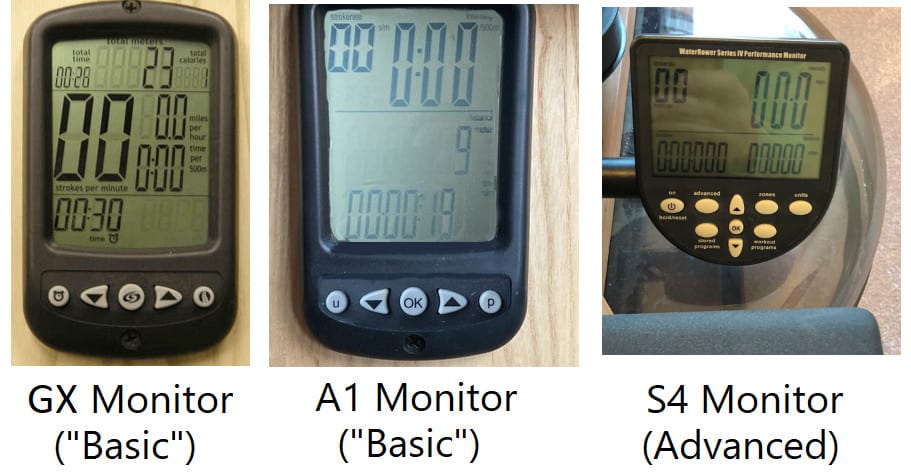
In comparing the WaterRower A1 vs. the WaterRower GX, more than anything it seems to have been a rebranding by WaterRower.
The WaterRower GX and A1 rowers are nearly identical. The GX and A1 differ from most WaterRower models in that they both have a simple monitor and feature ash wood with an aluminium monorail. The A1 is a few inches higher.
Both had a Studio and Home version at one point.
The A1 is still in production but features oak instead of ash wood, and has done away with the “Studio” and “Home” distinctions (there’s only one). It’s now called the “WaterRower A1 Oak Rowing Machine“. The GX is discontinued.
The GX and A1 monitors are said to be simplified versions of the S4. They use a ‘QuickStart’ feature, wherein most functions are activated by pressing the ‘Start’ button to begin a workout.
Without the S4, data tracking isn’t as advanced and you won’t be able to race online with others.
Final Thoughts
The WaterRower GX Home rowing machine was meant to be a more affordable option. By foregoing the S4 monitor, they were able to offer it for about $1K whereas S4 models typically start at $1,100.
Also, the machine features ash wood and an aluminum monorail and is easily stored by standing it up vertically.
It was discontinued and eventually replaced by the A1 which made a comeback in 2017. The A1 is now made of oak.
The best alternative is the WaterRower A1 rowing machine.
See the WaterRower lineup here.
If you think you are interested in racing and comparing times, then you may want to check out the Concept2 RowErg. It is the #1 bestselling rowing machine and is used by all Olympic rowers and Crossfit gyms.
I hope you enjoyed my WaterRower GX Home Rowing Machine review. If you have any questions please leave them in the comment section below!

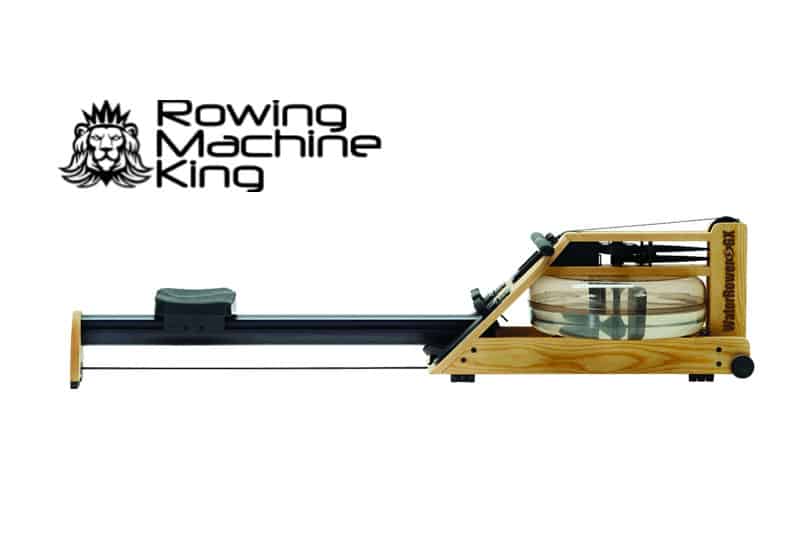
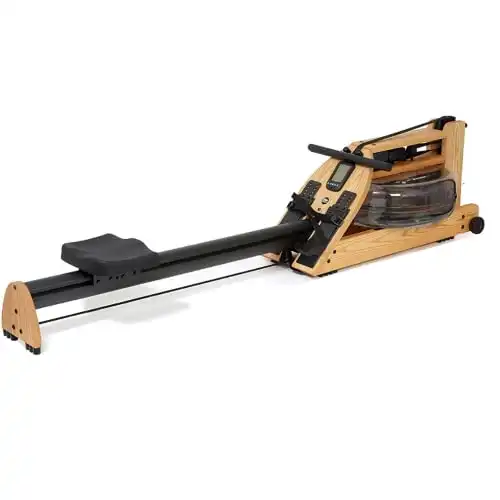
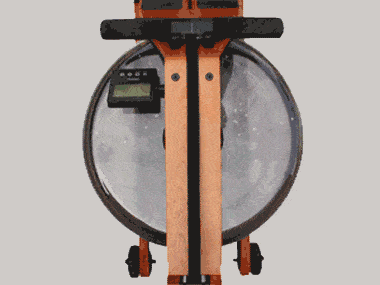
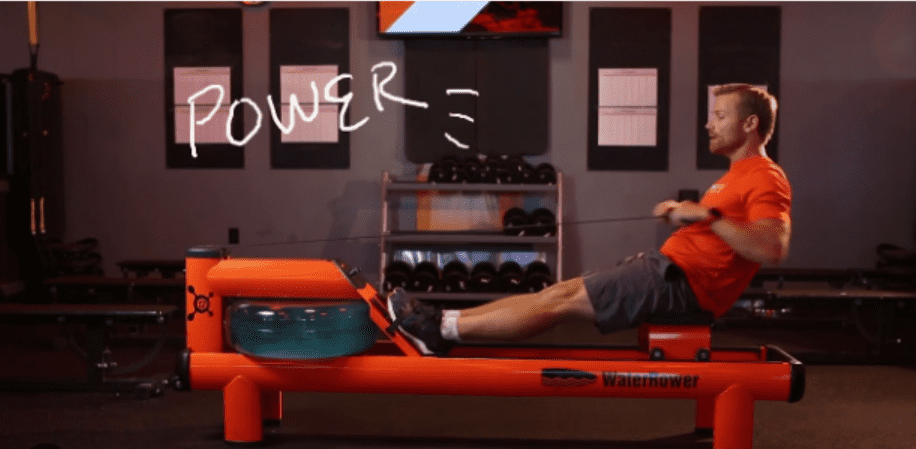
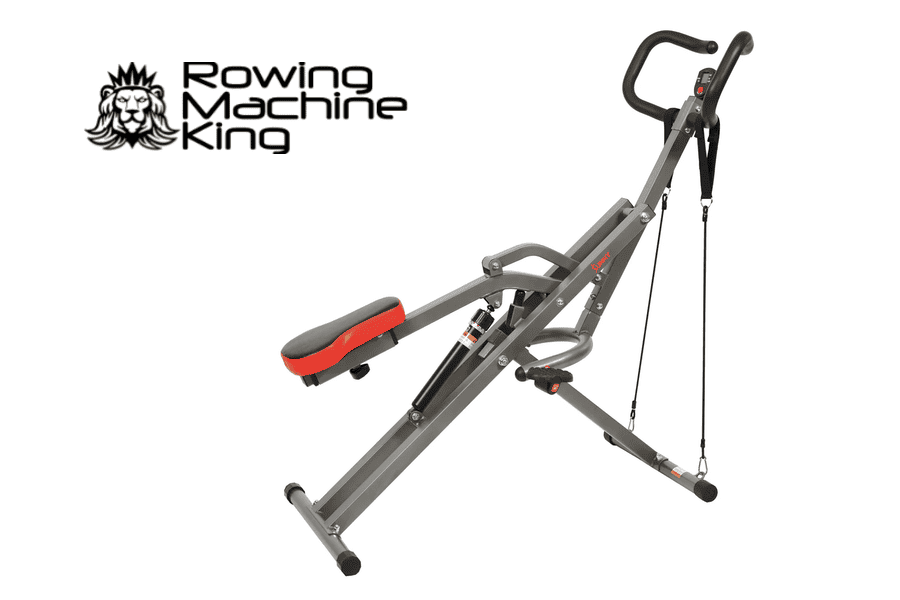
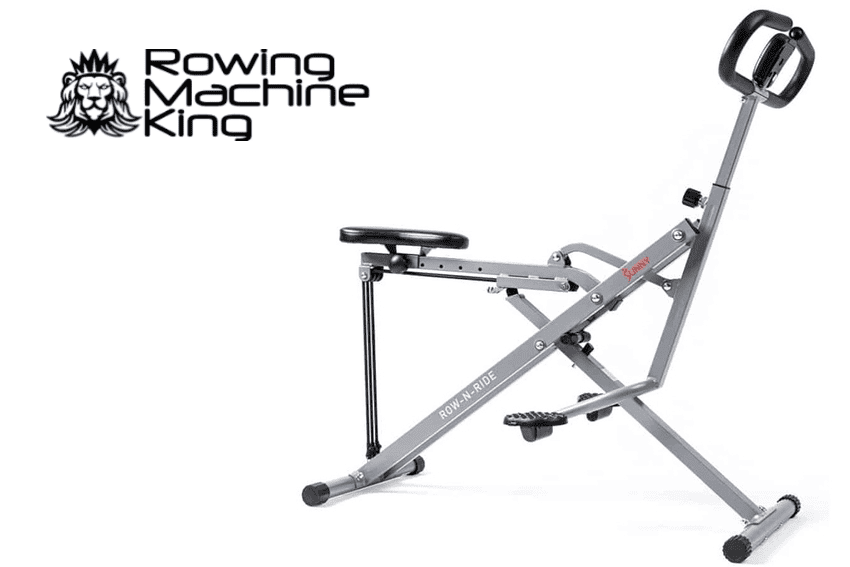
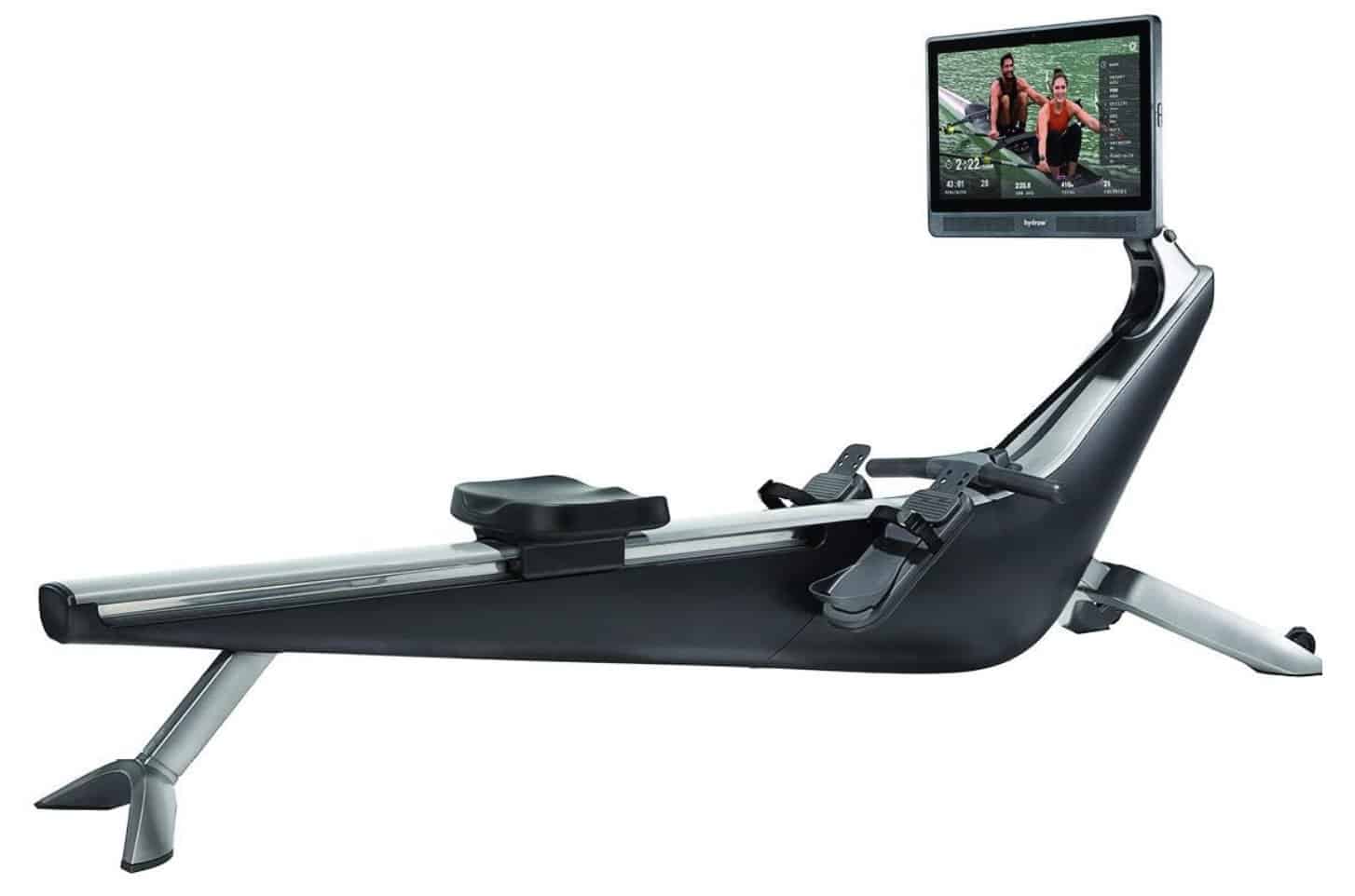
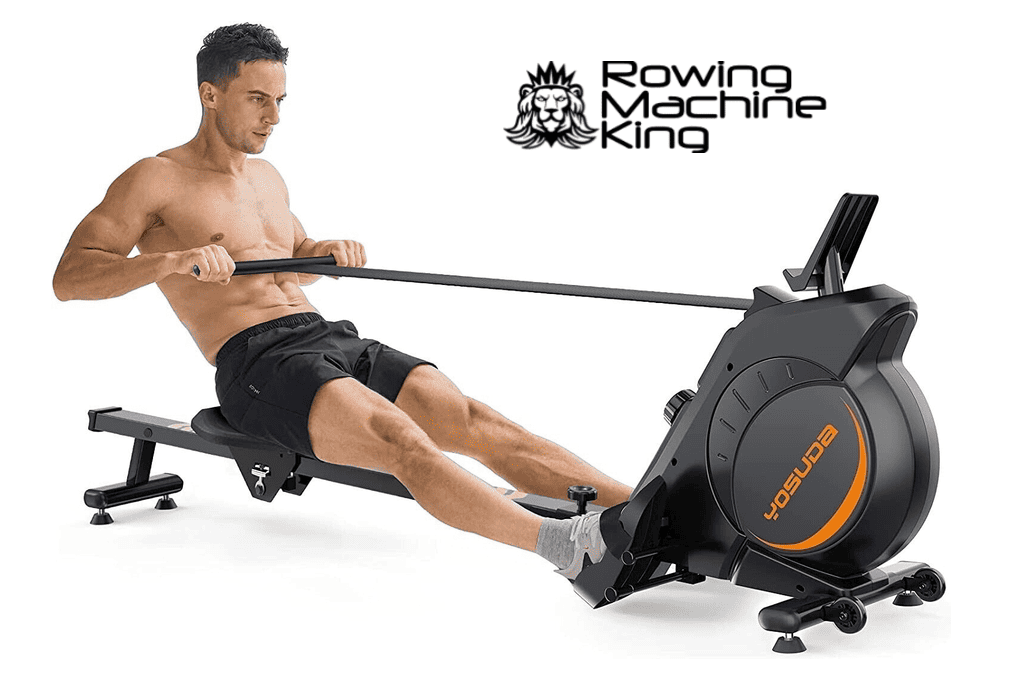
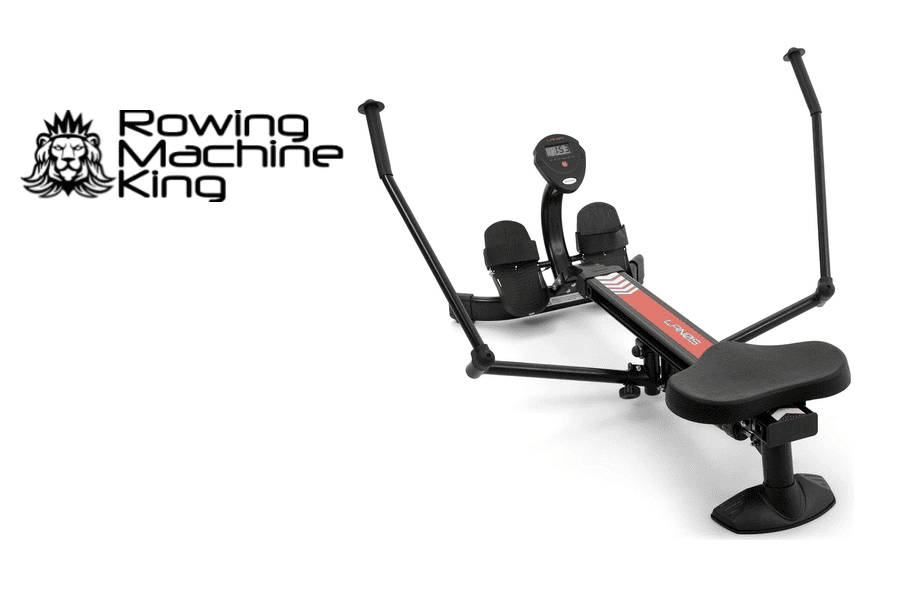
I am considering a used Hirise waterrower or the GX. What do you think would be the better choice for a garage gym if a used Hirise is around the same price of the GX? I love the aesthetics of the GX much more than the Hirise, but the Hirise looks to be more solidly built with less maintenance given the aluminum metal frame. I am guessing wood frame would have to be treated as well. What are your thoughts if you had the choice of used Hirise in good condition v. new GX.
Hi Tan,
Both will have the same resistance, so the next thing to think about is monitor functionality. If the Hirise has an S4 monitor it will be better than the GX monitor.
Also, you can think about the spacing of the feet. The Hirise will have the feet placed closer together, simulating the same spacing as a scull/ racing shell. The GX will have the feet further apart for comfort and to allow the monorail design.
I think both will have perfectly fine quality and I wouldn’t worry about the quality of either.
Hope this helps!